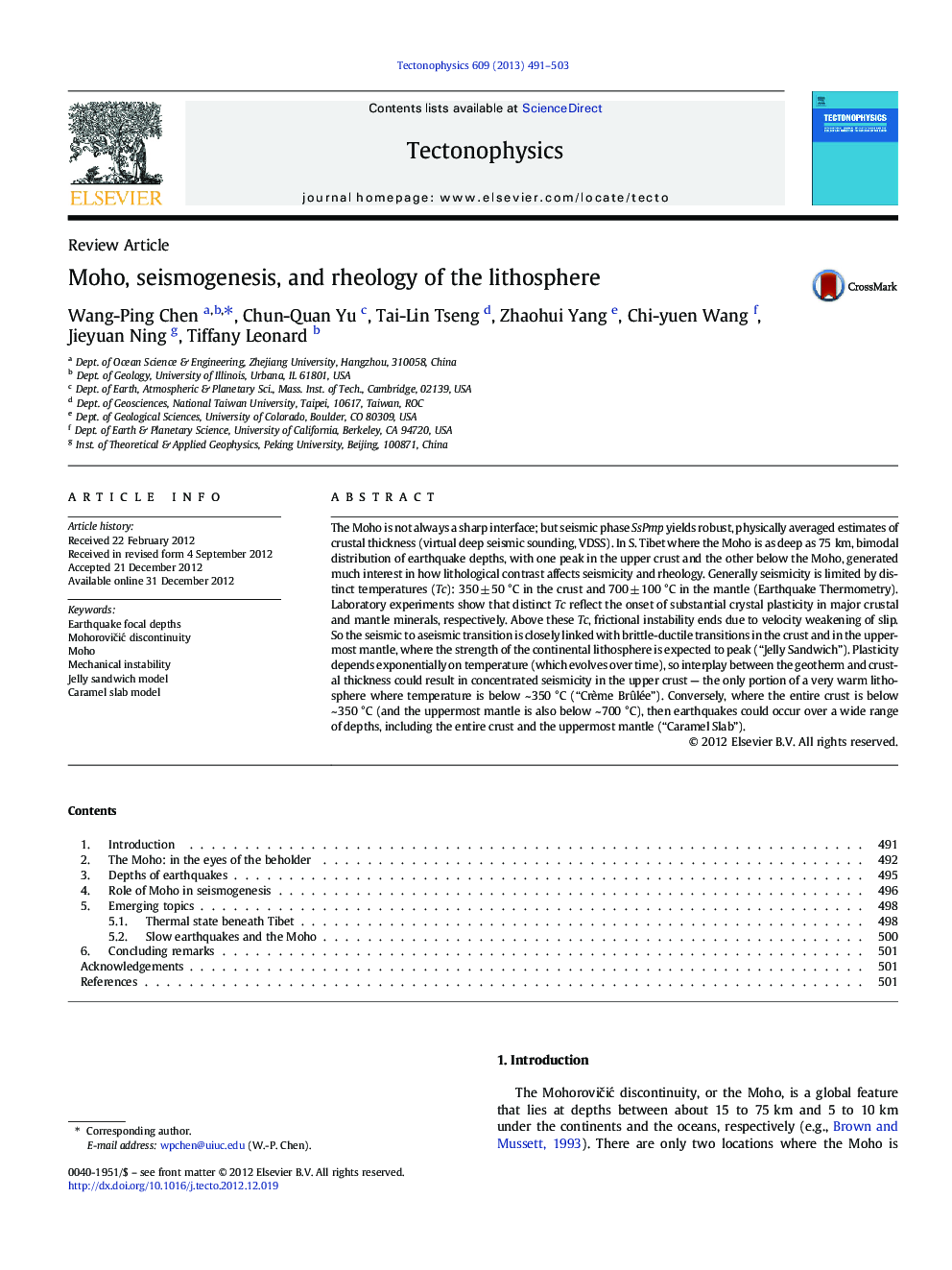| کد مقاله | کد نشریه | سال انتشار | مقاله انگلیسی | نسخه تمام متن |
|---|---|---|---|---|
| 6434095 | 1636778 | 2013 | 13 صفحه PDF | دانلود رایگان |
The Moho is not always a sharp interface; but seismic phase SsPmp yields robust, physically averaged estimates of crustal thickness (virtual deep seismic sounding, VDSS). In S. Tibet where the Moho is as deep as 75 km, bimodal distribution of earthquake depths, with one peak in the upper crust and the other below the Moho, generated much interest in how lithological contrast affects seismicity and rheology. Generally seismicity is limited by distinct temperatures (Tc): 350 ± 50 °C in the crust and 700 ± 100 °C in the mantle (Earthquake Thermometry). Laboratory experiments show that distinct Tc reflect the onset of substantial crystal plasticity in major crustal and mantle minerals, respectively. Above these Tc, frictional instability ends due to velocity weakening of slip. So the seismic to aseismic transition is closely linked with brittle-ductile transitions in the crust and in the uppermost mantle, where the strength of the continental lithosphere is expected to peak (“Jelly Sandwich”). Plasticity depends exponentially on temperature (which evolves over time), so interplay between the geotherm and crustal thickness could result in concentrated seismicity in the upper crust - the only portion of a very warm lithosphere where temperature is below ~ 350 °C (“Crème Brûlée”). Conversely, where the entire crust is below ~ 350 °C (and the uppermost mantle is also below ~ 700 °C), then earthquakes could occur over a wide range of depths, including the entire crust and the uppermost mantle (“Caramel Slab”).
⺠Virtual deep seismic sounding is robust for obtaining averaged crustal thickness. ⺠Earthquake Thermometry: Seismicity is limited by distinct temperatures (Tc). ⺠Tc is 350 ± 50 °C in the crust and 700 ± 100 °C in the mantle where slip instability ends. ⺠Interplay of geotherm and crustal thickness can result in three patterns of focal depths. ⺠“Jelly sandwich” for modest geotherms and “caramel slab” for cold lithosphere.
Journal: Tectonophysics - Volume 609, 8 December 2013, Pages 491-503
